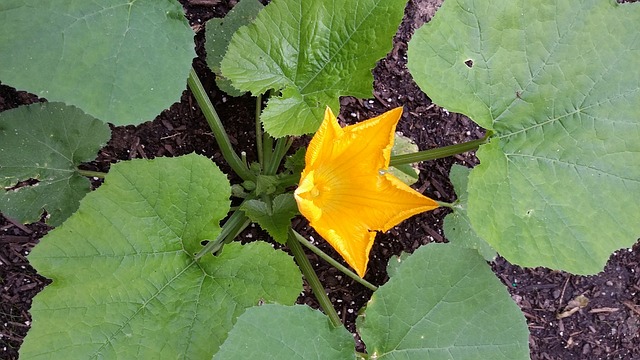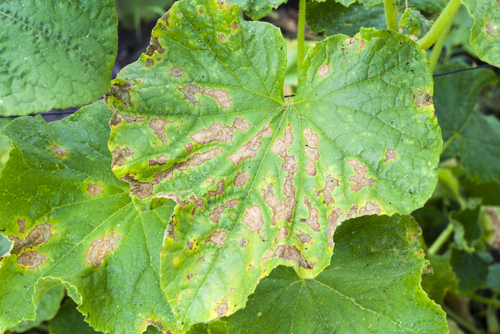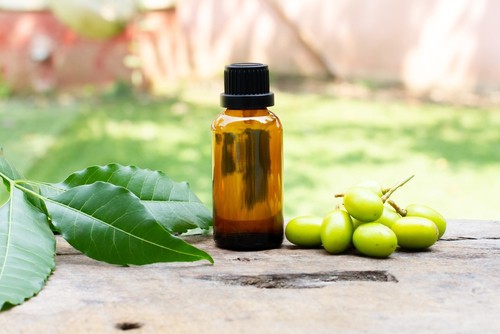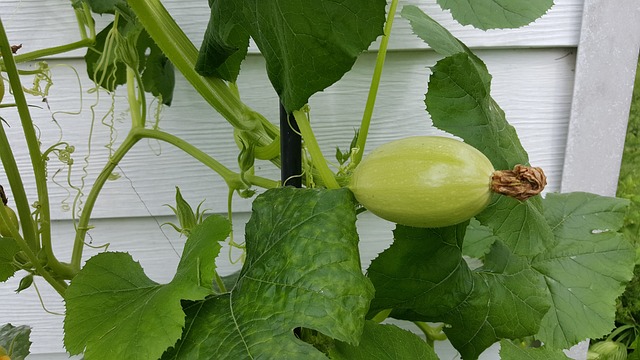White spots on squash leaves and stems can be a common issue for gardeners and farmers. These spots can be caused by a variety of factors, including diseases, pests, and environmental conditions. Understanding the cause of the white spots can help prevent further damage and promote healthy growth of the squash plants.
Identifying the cause of the white spots can be a challenge, as there are several diseases and pests that can cause similar symptoms. Bacterial leaf spot, powdery mildew, and downy mildew are just a few of the diseases that can cause white spots on squash leaves and stems.
Pests such as spider mites and whiteflies can also cause damage to the leaves, resulting in white spots. Additionally, environmental conditions such as high humidity and low light can contribute to the development of white spots on squash leaves.
Prevention and treatment methods for white spots on squash leaves and stems will vary depending on the cause of the issue. Some squash varieties are more resistant to certain diseases and pests, so choosing the right variety can help prevent issues from occurring.
Additionally, maintaining proper growing conditions, such as adequate light and ventilation, can help prevent the development of white spots. Treatment methods may include the use of fungicides or insecticides, as well as pruning affected leaves and stems.
Key Takeaways on White Spots on Squash Leaves and Stems
- White spots on squash leaves and stems can be caused by a variety of factors, including diseases, pests, and environmental conditions.
- Identifying the cause of the white spots is important in order to prevent further damage and promote healthy growth of the squash plants.
- Prevention and treatment methods will vary depending on the cause of the issue, and may include choosing resistant squash varieties, maintaining proper growing conditions, and using fungicides or insecticides.
Check out these other top picks:
- Are Spinach With White Spots Safe to Eat?
- White Spots on Spearmint Leaves
- White Spots on Seedling Leaves
White Spots on Squash Leaves and Stems – 4 Common Problems

White spots on squash leaves and stems are a common issue that gardeners face. These spots can be caused by various factors, including fungal diseases, pests, and environmental factors. In this section, we will discuss the most common causes of white spots on squash leaves and stems and what you can do to prevent and treat them.
1. Powdery Mildew
Powdery mildew is a fungal disease that is a common cause of white spots on squash leaves and stems. It typically appears as white powdery spots on the upper surface of the leaves, but it can also affect the stems and other parts of the plant. Powdery mildew thrives in warm, humid conditions and can spread rapidly if left untreated.
To prevent powdery mildew, it is essential to keep the plants dry and well-ventilated. Water the plants at the base rather than overhead, and avoid watering in the evening. If powdery mildew does appear, remove and destroy the affected leaves and treat the plant with a fungicide.
2. Downy Mildew
Downy mildew is another fungal disease that can cause white spots on squash leaves and stems. Unlike powdery mildew, downy mildew typically appears as yellowish or brownish spots on the upper surface of the leaves, with a downy or fuzzy appearance on the underside. It can also affect the stems and other parts of the plant.
To prevent downy mildew, it is essential to keep the plants dry and well-ventilated. Water the plants at the base rather than overhead, and avoid watering in the evening. If downy mildew does appear, remove and destroy the affected leaves and treat the plant with a fungicide.
3. Pests
Pests such as spider mites and aphids can also cause white spots on squash leaves and stems. Spider mites are tiny insects that feed on the plant’s sap, causing white or yellow spots on the leaves. Aphids are small, soft-bodied insects that feed on the plant’s sap and excrete a sticky substance that can attract other pests.
To prevent pest infestations, it is essential to keep the plants healthy and well-watered. Monitor the plants regularly for signs of pest activity and treat them promptly with an insecticide if necessary.
4. Environmental Factors
Environmental factors such as sunscald and nutrient deficiencies can also cause white spots on squash leaves and stems. Sunscald occurs when the leaves are exposed to too much direct sunlight, causing them to turn white or yellow. Nutrient deficiencies can cause white spots on the leaves, particularly if the plant is lacking in calcium or magnesium.
To prevent sunscald, provide the plants with some shade during the hottest part of the day. To prevent nutrient deficiencies, ensure that the plants are well-fed with a balanced fertilizer and that the soil pH is within the appropriate range.
Identifying Common Diseases
Squash plants are susceptible to a variety of diseases that can cause white spots on leaves and stems. Identifying the specific disease affecting your squash plants is crucial to implementing the right treatment and preventing further spread. Here are some common diseases that cause white spots on squash leaves and stems:
1. Powdery Mildew

Powdery mildew is a fungal disease that thrives in warm, humid conditions. It causes white powdery spots on both upper and lower surfaces of leaves. As the disease progresses, the spots can grow and merge, leading to yellowing and death of leaves. Powdery mildew can also affect stems and fruit.
2. Downy Mildew
Downy mildew is another fungal disease that causes white spots on leaves. However, unlike powdery mildew, downy mildew affects only the undersides of leaves. The spots are initially yellow and then turn brown as the disease progresses. Downy mildew can also cause leaf curling and stunting of plants.
3. Bacterial Wilt
Bacterial wilt is a bacterial disease that causes white spots on leaves and stems. The spots are initially water-soaked and then turn brown as the disease progresses. Bacterial wilt can cause sudden wilting and death of plants.
4. Cucumber Mosaic Virus
Cucumber mosaic virus is a viral disease that causes white mottling on leaves. The spots can be irregularly shaped and can also cause leaf distortion. Cucumber mosaic virus can also affect fruit development.
5. Angular Leaf Spot
Angular leaf spot is a bacterial disease that causes small, angular, water-soaked spots on leaves. The spots can turn yellow and then brown as the disease progresses. Angular leaf spot can also cause leaf drop and stunting of plants.
6. Bacterial Leaf Spot
Bacterial leaf spot is another bacterial disease that causes white spots on leaves and stems. The spots are initially water-soaked and then turn brown as the disease progresses. Bacterial leaf spot can cause leaf drop and stunting of plants.
7. Alternaria Leaf Blight
Alternaria leaf blight is a fungal disease that causes white spots on leaves. The spots can be irregularly shaped and can also cause leaf distortion. Alternaria leaf blight can also affect fruit development.
8. Anthracnose
Anthracnose is a fungal disease that causes white spots on leaves and stems. The spots can be irregularly shaped and can also cause leaf distortion. Anthracnose can also affect fruit development.
9. Gummy Stem Blight
Gummy stem blight is a fungal disease that causes white spots on leaves and stems. The spots can be irregularly shaped and can also cause leaf distortion. Gummy stem blight can also affect fruit development.
10. Septoria Leaf Spot
Septoria leaf spot is a fungal disease that causes white spots on leaves. The spots can be circular and can also cause leaf drop. Septoria leaf spot can also affect fruit development.
Effects of Environmental Conditions

Squash plants are susceptible to various environmental conditions that can cause white spots on their leaves and stems. These conditions include inadequate water, poor air circulation, high temperatures, low humidity, and weather fluctuations.
Water is essential for the growth and development of squash plants, and inadequate water can cause stress and make the plant more vulnerable to diseases. When the plant is under stress, it may develop white spots on its leaves and stems. Therefore, it is crucial to maintain adequate moisture levels in the soil.
Poor air circulation can also contribute to the development of white spots on squash leaves. When there is not enough air movement, humidity levels can rise, creating a favorable environment for fungal growth. It is essential to ensure that the squash plants are not overcrowded and have enough space to allow air to circulate freely.
High temperatures can cause squash plants to wilt and develop white spots on their leaves. Squash plants grow best at temperatures between 18 and 25°C (65-75°F). When temperatures exceed this range, the plants may become stressed and develop white spots.
Low humidity levels can also cause white spots on squash leaves. When the air is dry, the plants can lose moisture through transpiration, leading to stress and white spots. However, high humidity levels can also cause problems, as it can create a favorable environment for fungal growth.
Weather fluctuations can also cause white spots on squash leaves. For instance, sudden changes in temperature or humid conditions can stress the plant and cause white spots to appear. Squash plants grow best in full sun, but sudden changes in weather conditions can cause stress and lead to white spots.
Impact on Squash Varieties
White spots on squash leaves and stems can have a significant impact on various squash varieties. These spots are often a sign of powdery mildew, a fungal disease that can spread rapidly and cause whole plants to turn yellow and die.
Summer squash, including zucchini, are particularly susceptible to powdery mildew. The disease can cause a reduction in fruit yield and quality, as well as stunted growth and weakened plants. Winter squash varieties, on the other hand, are less affected by powdery mildew as they tend to have a longer growing season and mature more slowly.
In addition to powdery mildew, white spots on squash leaves and stems can also be a sign of other diseases and pests that can impact squash plants. For example, bacterial wilt, a disease spread by cucumber beetles, can cause leaves to wilt and turn white before the plant eventually dies.
It is important for gardeners and farmers to monitor their squash plants regularly for signs of disease and pests. This can include inspecting leaves and stems for white spots, as well as checking for other symptoms such as wilting, discoloration, and deformities.
In terms of prevention and management, there are several steps that can be taken to reduce the impact of white spots on squash varieties. These can include planting disease-resistant squash varieties, practicing crop rotation, maintaining proper spacing between plants, and using organic fungicides and pesticides when necessary.
Role of Pests and Insects

Pests and insects can cause white spots on squash leaves and stems, which can lead to a reduction in plant growth and yield. Some of the most common pests and insects that cause white spots on squash plants are squash vine borers, squash bugs, and whiteflies.
Squash vine borers are the larvae of a moth that lays its eggs at the base of squash plants. The larvae then burrow into the stem and feed on the plant tissue, causing the stem to wilt and eventually die. Squash vine borers can be identified by the sawdust-like frass that they leave behind.
Squash bugs are sap-sucking insects that feed on the leaves, stems, and fruit of squash plants. They are brown or gray in color and have a distinctive shield-shaped body. Squash bugs can cause yellowing and wilting of the leaves, as well as the formation of white spots.
Whiteflies are small, white, sap-sucking insects that are often found on the undersides of squash leaves. They can cause yellowing of the leaves and the formation of white spots. Whiteflies can also transmit viruses that can cause further damage to the plant.
Other insects that can cause white spots on squash plants include cucumber beetles, flies, and parasitic wasps. These insects can be controlled through the use of insecticides or by introducing natural predators such as ladybugs or lacewings.
It is important to monitor squash plants regularly for signs of pest and insect damage, and to take action as soon as possible to prevent further damage. Regular pruning and removal of affected plant tissue can also help to control the spread of pests and insects.
Prevention and Treatment Methods
Fungicide and Horticultural Oil
Fungicides are a popular treatment method for white spots on squash leaves and stems. It is important to choose a fungicide that is specifically designed to treat powdery mildew and downy mildew, the two most common fungal infections that cause white spots on squash leaves.
Horticultural oil is another effective treatment method for powdery mildew. It works by suffocating the spores and preventing fungal growth. It is important to apply fungicide and horticultural oil according to the manufacturer’s instructions.
Neem Oil and Other Organic Solutions

Neem oil is a natural and organic solution for treating white spots on squash leaves. It works by disrupting the fungal growth and preventing spores from germinating. Other organic solutions include potassium bicarbonate, compost tea, and sulfur.
These solutions work by changing the pH levels of the plant and creating an environment that is hostile to fungal growth. It is important to apply these solutions according to the manufacturer’s instructions.
Pruning and Crop Rotation
Pruning is an effective prevention method for white spots on squash leaves. It involves removing infected leaves and stems to prevent the spread of the infection. Crop rotation is another effective prevention method.
It involves planting different crops in different areas each year to prevent the buildup of fungal spores in the soil. It is important to use clean pruning shears and to rotate crops every year.
Improving Air Circulation and Watering Practices
Improving air circulation and watering practices can also prevent white spots on squash leaves. It is important to space plants properly to allow for adequate air circulation.
Mulching can also help to retain moisture in the soil and prevent fungal growth. Soaker hoses are an effective way to water plants without getting the leaves wet, which can promote fungal growth.
Resistant Squash Varieties
When it comes to preventing white spots on squash leaves and stems, planting resistant varieties is a good first step. Some squash varieties are naturally resistant to powdery mildew, the fungal disease that causes the white spots.
One such variety is the ‘Butternut’ squash, which is known for its resistance to powdery mildew. This variety produces oblong-shaped fruits with smooth, tan skin and sweet, nutty flesh. Another resistant variety is the ‘Tromboncino’ squash, which is a vining type of squash that produces long, curved fruits with green skin and mild, nutty flavor.
The ‘Crown Prince’ squash is another variety that is resistant to powdery mildew. This variety produces blue-gray fruits with sweet, nutty flesh and is often used in soups and stews.
In addition to these varieties, there are also hybrid squash varieties that have been bred for resistance to powdery mildew. One such hybrid is the ‘Sunray’ squash, which produces bright yellow fruits with sweet, nutty flesh.
When selecting resistant squash varieties, it’s important to keep in mind that resistance does not guarantee immunity. Even resistant varieties can still develop powdery mildew if the conditions are right. However, planting resistant varieties can help reduce the risk of powdery mildew and white spots on squash leaves and stems.
Conclusion

White spots on squash leaves and stems are often a symptom of powdery mildew, a fungal disease that thrives in warm, humid weather. It can be a significant problem for squash growers, as it can spread quickly and cause whole plants to turn yellow and die.
Thankfully, there are several steps that gardeners can take to prevent and treat powdery mildew. These include planting disease-resistant varieties, providing adequate air circulation, avoiding overhead watering, and removing infected plant material promptly.
Additionally, there are several organic and chemical treatments available to control powdery mildew, including baking soda sprays, neem oil, and fungicides. However, it is essential to use these treatments carefully and according to the instructions to avoid harming beneficial insects or damaging the environment.
Frequently Asked Questions
How to treat powdery mildew on squash?
Powdery mildew is a common fungal disease that affects squash plants. It appears as white spots on the leaves and stems, and can cause leaves to turn yellow and die. To treat powdery mildew, you can use a fungicide spray that contains potassium bicarbonate.
This spray is effective in killing the fungus and preventing it from spreading. You can also try removing infected leaves and stems to prevent the disease from spreading further.
What are the white spots on squash stems?
White spots on squash stems are a common symptom of powdery mildew. This fungal disease can cause leaves and stems to become covered in a white, powdery substance. The spots can also appear on the fruit of the plant, causing it to become discolored and deformed.
Why are my squash leaves have white spots?
Squash leaves can develop white spots due to a variety of reasons. The most common cause is powdery mildew, which is a fungal disease that thrives in warm, humid weather. Other causes of white spots on squash leaves include insect damage, nutrient deficiencies, and sunburn.
How do you get rid of powdery mildew on squash leaves?
To get rid of powdery mildew on squash leaves, you can use a fungicide spray that contains potassium bicarbonate. This spray is effective in killing the fungus and preventing it from spreading.
You can also try removing infected leaves and stems to prevent the disease from spreading further. Additionally, you can improve air circulation around the plant by pruning it and spacing it out from other plants.
Are white spots on squash leaves a sign of disease?
Yes, white spots on squash leaves are often a sign of disease. The most common disease that causes white spots on squash leaves is powdery mildew. However, other diseases and pests can also cause white spots on squash leaves.
What are some natural remedies for squash fungus?
There are several natural remedies for squash fungus, including:
1. Neem oil: This natural oil is effective in killing fungal spores and preventing them from spreading.
2. Baking soda: A solution of baking soda and water can be sprayed on the leaves to kill the fungus.
3. Milk: A mixture of milk and water can be sprayed on the leaves to prevent the fungus from spreading.
4. Garlic: A mixture of garlic and water can be sprayed on the leaves to kill the fungus.

Hey, I’m Lisa and I’ve been an avid gardener for over 30 years. I love writing, talking and living in the garden! Feel free to connect with me on my socials below


